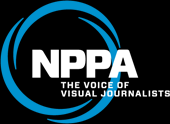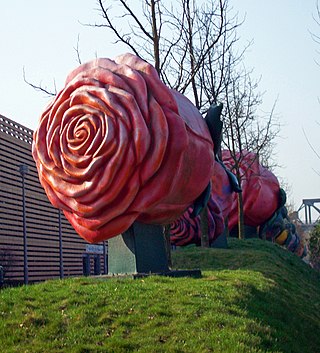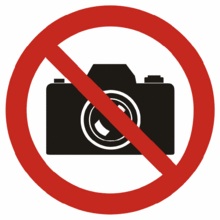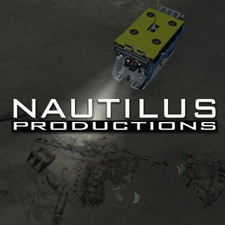Related Research Articles

Queen Anne's Revenge was an early-18th-century ship, most famously used as a flagship by Edward Teach, better known by his nickname Blackbeard. The date and place of the ship's construction are uncertain, and there is no record of its actions prior to 1710 when it was operating as a French privateer under the name La Concorde. Surviving features of the ship's construction strongly suggest it was built by French shipwrights, based on differences in fastening patterns in the late 17th and early 18th centuries. After several years of service by French sailors, she was captured by Blackbeard in 1717. Blackbeard used the ship for less than a year, but captured numerous prizes using her as his flagship.
The American Society of Media Photographers, abbreviated ASMP, is a professional association of imaging professionals, including photojournalists, architectural, underwater, food/culinary and advertising photographers as well as video/film makers and other specialists. Its members are primarily those who create images for publications, though many cross over into wedding and portrait photography.

Professional Photographers of America (PPA) is a nonprofit trade association of professional photographers. As of August 2022, PPA has 35,000 members.

The National Press Photographers Association (NPPA) is an American professional association made up of still photographers, television videographers, editors, and students in the journalism field. Founded in 1946, the organization is based in at the Grady College of Journalism and Mass Communication at the University of Georgia. The NPPA places emphasis on photojournalism, or journalism that presents a story through the use of photographs or moving pictures. The NPPA holds annual competitions as well as several quarterly contests, seminars, and workshops designed to stimulate personal growth in its members. It utilizes a mentor program which offers its members the opportunity to establish a relationship with a veteran NPPA member and learn from them. The organization also offers a critique service, a job bank, an online discussion board, and various member benefits.

Freedom of panorama (FOP) is a provision in the copyright laws of various jurisdictions that permits taking photographs and video footage and creating other images of buildings and sometimes sculptures and other art works which are permanently located in a public place, without infringing on any copyright that may otherwise subsist in such works, and the publishing of such images. Panorama freedom statutes or case law limit the right of the copyright owner to take action for breach of copyright against the creators and distributors of such images. It is an exception to the normal rule that the copyright owner has the exclusive right to authorize the creation and distribution of derivative works.
Architectural photography is the subgenre of the photography discipline where the primary emphasis is made to capturing photographs of buildings and similar architectural structures that are both aesthetically pleasing and accurate in terms of representations of their subjects. Architectural photographers are usually skilled in the use of specialized techniques and cameras for producing such specialized photography.

The intellectual property rights on photographs are protected in different jurisdictions by the laws governing copyright and moral rights. In some cases photography may be restricted by civil or criminal law. Publishing certain photographs can be restricted by privacy or other laws. Photography can be generally restricted in the interests of public morality and the protection of children.
The copyright law of the United States grants monopoly protection for "original works of authorship". With the stated purpose to promote art and culture, copyright law assigns a set of exclusive rights to authors: to make and sell copies of their works, to create derivative works, and to perform or display their works publicly. These exclusive rights are subject to a time and generally expire 70 years after the author's death or 95 years after publication. In the United States, works published before January 1, 1929, are in the public domain.

Ralph Oman is an American lawyer and former Register of Copyrights. He is currently the Pravel, Hewitt, Kimball and Kreiger Professorial Lecturer in Intellectual Property and Patent Law at The George Washington University Law School.

The Graphic Artists Guild is a guild of graphic designers, illustrators, and photographers and is organized into seven chapters around the United States. It is a member of the international organization Icograda.

Mike Theiss is a National Geographic photographer, on air talent, video producer, professional storm chaser. He is the CEO/Founder of Ultimate Chase Inc. that specializes in extreme nature photography. His work has been published in National Geographic magazine numerous times for displaying hurricanes, tornadoes, lightning, volcanoes, and other rare nature events.
Tom Hussey is an American photographer specialising in commercial advertising and lifestyle photography.
The Copyright Alliance is a nonprofit, nonpartisan 501(c)(4) organization representing artistic creators across a broad range of copyright disciplines.

Peter Krogh is an American photographer, author, public speaker, filmmaker and publisher. He is best known for his work in the field of digital asset management (DAM).

The Copyright Remedy Clarification Act (CRCA) is a United States copyright law that attempted to abrogate sovereign immunity of states for copyright infringement. The CRCA amended 17 USC 511(a):
In general. Any State, any instrumentality of a State, and any officer or employee of a State or instrumentality of a State acting in his or her official capacity, shall not be immune, under the Eleventh Amendment of the Constitution of the United States or under any other doctrine of sovereign immunity, from suit in Federal Court by any person, including any governmental or nongovernmental entity, for a violation of any of the exclusive rights of a copyright owner provided by sections 106 through 122, for importing copies of phonorecords in violation of section 602, or for any other violation under this title.

Nautilus Productions LLC is an American video production, stock footage, and photography company incorporated in Fayetteville, North Carolina in 1997. The principals are producer/director Rick Allen and photographer Cindy Burnham. Nautilus specializes in documentary production and underwater videography, and produced QAR DiveLive, a live webcast of underwater archaeology filmed at the wreck of the Queen Anne's Revenge in 2000 and 2001.

Putlocker is a file hosting index website used for streaming entertainment media, particularly films and television series, for free. The initial website originated in the United Kingdom in 2011, and grew to receive millions of daily visitors after the shutdown of Megaupload. In May 2016, the website was blocked in the UK by a High Court order, and at its peak prior to a temporary closure in late 2016, Alexa Internet listed Putlocker as ranking among the top 250 most-visited websites worldwide. Putlocker has been reported by the Motion Picture Association (MPA) as a major piracy threat.
Charles "Flip" Nicklin is a nature photographer best known for his underwater photographs of whales. He has been called "one of the world's leading whale photographers."
Jim S. Adler, also known by the nickname of The Texas Hammer, is an American trial attorney and businessman. He is the founder of Houston, Texas-based law firm Jim Adler & Associates. Adler has been practicing law in Texas in the area of personal injury for 54 years. Some of his T.V. advertisements have been a subject of controversy.
On August 18, 2015, then North Carolina Governor Pat McCrory (R) signed "Blackbeard's Law," N.C. General Statute §121-25(b), into law. The statute stated that, "All photographs, video recordings, or other documentary materials of a derelict vessel or shipwreck or its contents, relics, artifacts, or historic materials in the custody of any agency of the North Carolina government or its subdivisions shall be a public record pursuant to G.S. 132-1. There shall be no limitation on the use of or no requirement to alter any such photograph, video recordings, or other documentary material, and any such provision in any agreement, permit, or license shall be void and unenforceable as a matter of public policy." The statute was inserted into another bill by Representatives Norman Sanderson and Jim Davis at the request of the North Carolina Department of Natural and Cultural Resources (NCDNCR). One year later, the North Carolina Legislature amended the statute to read, "All photographs, video recordings, or other documentary materials of a derelict vessel or shipwreck or its contents, relics, artifacts, or historic materials in the custody of any agency of North Carolina government or its subdivisions shall be a public record pursuant to Chapter 132 of the General Statutes." The moniker "Blackbeard's Law" refers to the pirate Blackbeard and was first penned by reporter Paul Woolverton of the Fayetteville Observer.
References
- ↑ Mickey Osterreicher, Alicia Calzada. "Texas Appellate Court holds that government piracy of copyrighted work is not a takings". NPPA. National Press Photographers Association. Retrieved 18 November 2019.
- ↑ "University of Houston System v. Jim Olive Photography". Copyright Alliance. Retrieved 18 November 2019.
- ↑ Edwards, Jenny (18 June 2019). "Fstoppers Interviews Jim Olive, the Texas Photographer Whose Copyrighted Image was Stolen by the University of Houston". Fstoppers. Retrieved 18 November 2019.
- ↑ Sixel, L.M. (14 June 2019). "Texas court says photographer has no recourse against university copyright infringement". Houston Chronicle. Retrieved 18 November 2019.
- ↑ "Allen v. Cooper".
- ↑ "No. 18-877". Supreme Court of the United States. Retrieved 25 July 2019.
- ↑ Liptak, Adam (2 September 2019). "Blackbeard's Ship Heads to Supreme Court in a Battle Over Another Sort of Piracy". New York Times. Retrieved 20 October 2019.
- ↑ Gardner, Eriq (5 November 2019). "Supreme Court Wrestles With Consequences for Piracy by State Governments". Hollywood Reporter. Retrieved 16 November 2019.
- ↑ "Allen v. Cooper". Copyright Alliance. Retrieved 18 November 2019.
- ↑ "NPPA, ASMP asks SCOTUS for protection of copyright infringement by states". NPPA. Retrieved 18 November 2019.
- ↑ "Allen v. Cooper". U.S. Chamber Litigation Center. Retrieved 18 November 2019.
- ↑ Kass, Dani. "Copyright Cavalry Supports Pirate Ship Photog At High Court". Constitutional Accountability Center. Retrieved 17 November 2019.
- ↑ Murphy, Brian (5 November 2019). "How Blackbeard's ship and a diver with an 'iron hand' ended up at the Supreme Court". Charlotte Observer. Retrieved 16 November 2019.